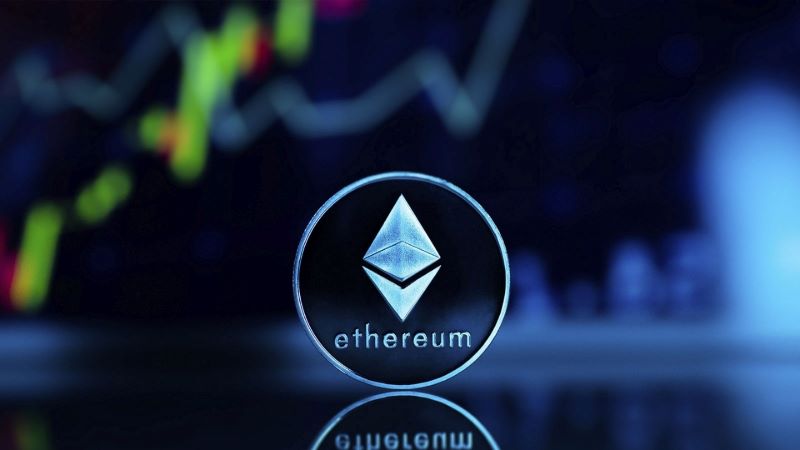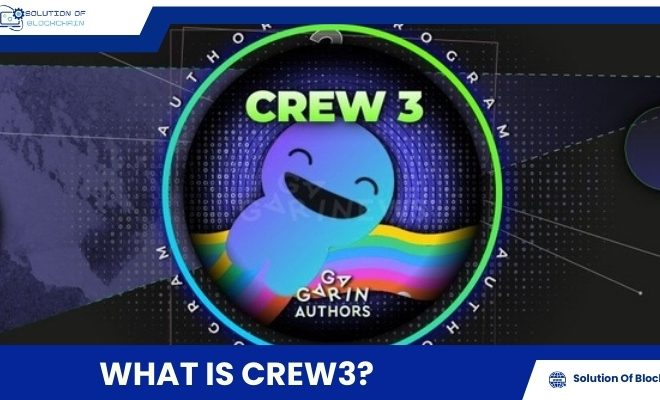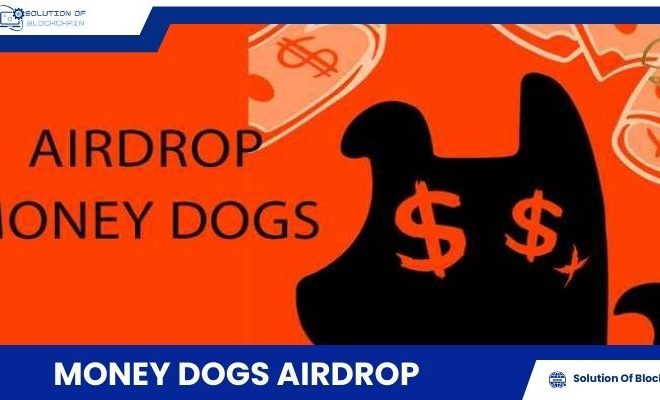
Information about Ethereum: A potential Blockchain platform
Among the current blockchain platforms, Ethereum is considered one of the pioneering projects with exceptional growth potential. So, what information about Ethereum should you pay attention to? Let’s explore it together in the article below.
Information about Ethereum
Ethereum is an open-source, decentralized blockchain platform that allows developers to build and deploy decentralized applications (DApps). Blockchain is a technology that stores data in a chain of linked blocks, ensuring transparency, security, and immutability. Ethereum’s decentralization means it is not controlled by any organization or individual but operates based on the consensus of many computers worldwide.
One of Ethereum’s prominent features is smart contracts. These are pieces of code stored on the blockchain that automatically execute when predetermined conditions are met. Smart contracts eliminate the need for intermediaries, offering benefits in transparency, security, and efficiency.
Compared to Bitcoin, the first and largest cryptocurrency globally, Ethereum has a different purpose and function. While Bitcoin is primarily used as a digital currency and store of value, Ethereum is designed as a versatile platform for building decentralized applications and services.
Behind Ethereum’s success is Vitalik Buterin, a young Canadian programmer of Russian descent. With a vision for a decentralized future, Buterin created Ethereum in 2013 and officially launched it in 2015. Since then, Ethereum has continuously grown and become one of the most important blockchain platforms today.
Learn about ETH
ETH, or Ether, is the native cryptocurrency of the Ethereum network. It plays a crucial role in maintaining the operation of the Ethereum ecosystem and has various use cases.
- Transaction fees: Whenever you conduct a transaction or interact with a smart contract on the Ethereum network, you need to pay a small fee in ETH, known as a “gas fee.” This gas fee ensures that transactions are processed quickly and securely by miners on the network.
- Payments: ETH is used as a means of payment for goods and services within the Ethereum ecosystem. Many DApps and platforms accept ETH as a form of payment, allowing you to buy and sell digital products, NFTs (Non-Fungible Tokens), or access special services.
- Investment: With the continuous development of Ethereum and its growing applications, the value of ETH has increased significantly in recent years. Many investors believe that ETH has great growth potential in the future and see it as an essential part of their investment portfolio.
- Staking: ETH is also used in staking, a process that helps secure the Ethereum network and validate transactions. By staking ETH, you contribute to the stability and security of the network and receive rewards in the form of newly created ETH.
The total supply of ETH is unlimited; however, the issuance rate of new ETH is tightly controlled through the Proof-of-Stake consensus mechanism. This helps maintain the stability and value of ETH in the long term.
The value of ETH is influenced by many factors, including the development of the Ethereum ecosystem, the demand for ETH, the overall cryptocurrency market conditions, and macroeconomic events.
Smart Contracts and Decentralized Applications (DApps)
Smart Contracts
Smart contracts are one of the most important features of Ethereum, considered the “soul” of this platform. In essence, a smart contract is a piece of code stored on the Ethereum blockchain, acting as an automatically executed agreement when the conditions are met.
Imagine a smart contract as a digital vending machine. You put money into the machine, select a product, and the machine automatically delivers it to you. Similarly, in a smart contract, the parties involved agree on the terms and encode them into program code. When the conditions are met, the contract automatically executes the pre-programmed actions, such as transferring money, transferring assets, or performing a specific task.
Decentralized Applications (DApps)
Decentralized Applications (DApps) are applications built and run on the Ethereum platform, leveraging the power of smart contracts for automatic and transparent operation. DApps offer several advantages over traditional applications, including:
- Transparency: All transactions and activities on DApps are recorded on the blockchain, publicly viewable and verifiable by anyone. This creates a transparent environment where everyone can track and verify the activities taking place on the application.
- Security: DApps have no single point of failure, meaning there is no central server storing data or controlling the application’s operation. This helps minimize the risk of attacks or censorship, protecting user data and assets.
- Control: Users have complete control over their data and assets on DApps. No organization or individual can interfere with your data or assets without your consent.
- Efficiency: DApps eliminate the need for intermediaries, reducing costs and increasing transaction speed. Transactions on DApps are conducted directly between the parties involved through smart contracts, without the need for banks, law firms, or any other intermediaries.
Ethereum has witnessed an explosive growth of DApps in various fields, from Decentralized Finance (DeFi), NFTs (Non-Fungible Tokens), gaming to supply chain management, electronic voting, identity management and more.
Decentralized Finance (DeFi) on Ethereum
DeFi, or Decentralized Finance, is one of the most prominent applications of Ethereum, revolutionizing how we approach traditional financial services. DeFi operates based on smart contracts and DApps on Ethereum, allowing users to perform financial transactions such as borrowing, lending, trading, and investing without the need for banks or intermediary financial institutions.
Some popular DeFi applications on Ethereum include:
- Decentralized Exchanges (DEXs): Allow users to directly trade cryptocurrencies and tokens without going through centralized exchanges, providing greater transparency and control for users.
- Lending/Borrowing: Enables users to borrow and lend cryptocurrencies at competitive interest rates, based on smart contracts. Users can use their digital assets as collateral to borrow cryptocurrencies or provide their assets for lending to earn interest.
- Stablecoins: Stablecoins are cryptocurrencies pegged to the value of a fiat currency like USD, helping minimize price volatility and facilitate transactions. Stablecoins are widely used in DeFi for payments, trading, and as collateral.
- Yield Farming: Allows users to earn profits by providing liquidity to DeFi protocols and receiving rewards in the form of tokens. Users can deposit their assets into liquidity pools and receive a portion of the trading fees or newly created tokens.
DeFi on Ethereum offers several benefits, including:
- Transparency: All transactions and activities on DeFi are public and verifiable on the blockchain, creating a transparent and trustworthy financial environment.
- Global accessibility: DeFi is not limited by geographical borders, allowing users worldwide to access financial services easily and conveniently.
- Inclusivity: DeFi opens up opportunities for financial access to those who are unbanked or restricted by traditional regulations, promoting financial inclusion.
- Competitive interest rates: DeFi often offers higher interest rates compared to traditional financial products, providing attractive earning opportunities for users.
However, DeFi also comes with certain risks, including:
- Smart Contract risks: Errors in smart contract code can lead to asset loss. Therefore, users need to be cautious when interacting with smart contracts and only use thoroughly audited DeFi protocols.
- Market risks: The value of digital assets can fluctuate significantly, leading to losses. Investors need to understand the market and have appropriate risk management strategies.
- Liquidity risks: Some DeFi protocols may experience liquidity issues, making it difficult to buy or sell assets. Users need to pay attention to the liquidity of assets before participating in DeFi protocols.
Despite the challenges, DeFi on Ethereum is growing at a rapid pace and attracting the interest of more and more investors and financial institutions. The development of DeFi not only brings new opportunities for users but also promotes growth and innovation within the Ethereum ecosystem.
The NFT market on Ethereum
NFTs, or Non-Fungible Tokens, are unique and irreplaceable digital assets. Each NFT represents ownership of a specific digital item or content, such as a painting, a song, an in-game item, or even a tweet.
Ethereum has become the leading platform for creating, buying, selling, and trading NFTs thanks to its ability to support smart contracts and the high security of the blockchain. Smart contracts allow for transparent and immutable verification and tracking of NFT ownership, ensuring their authenticity and value.
The applications of NFTs on Ethereum are incredibly diverse, opening up new opportunities for the creative and entertainment industries:
- Digital Art: NFTs allow artists to digitize and sell their works as unique pieces, ensuring ownership and creating new income streams. Artists can directly sell their work to collectors without going through traditional galleries or auction houses.
- Collecting: NFTs can represent digital collectibles, such as trading cards, virtual toys, or unique memorabilia. Collectors can own and trade these NFTs on online marketplaces, creating a vibrant and diverse community.
- Gaming: NFTs are used in blockchain games to represent in-game items, characters, or virtual land, allowing players to own and trade them freely. This creates a new gaming economy where players can earn money from playing games and owning valuable in-game assets.
- Music: NFTs can represent songs, albums, or tickets to exclusive music events. Musicians can directly sell their music to fans as NFTs, creating a new revenue stream and enhancing interaction with the community.
- And more: NFTs are also applied in various other fields such as virtual real estate, fashion, sports, and education, opening up endless possibilities for digitizing and trading valuable assets.
The NFT market on Ethereum has witnessed explosive growth in recent years, with billions of dollars traded each month. However, this market also faces some challenges:
- Sustainability: Some concerns exist regarding the environmental impact of creating and trading NFTs on Ethereum due to the network’s high energy consumption. Ethereum is transitioning to a Proof-of-Stake consensus mechanism to mitigate this environmental impact.
- Intellectual property rights: There are ongoing debates about intellectual property rights for NFTs, particularly in cases of unauthorized copying or use of artwork or content. Clear and fair regulations are needed to protect the rights of creators and NFT owners.
- Speculative bubble: The NFT market can be influenced by speculative activities, leading to significant price volatility and risks for investors. Investors need to be cautious and have a clear investment strategy when participating in the NFT market.
Despite these challenges, the NFT market on Ethereum still has significant growth potential in the future. The development of new technologies such as Layer 2 scaling solutions and the increasing interest from large institutions and investors will help drive the sustainable growth of this market. NFTs are not just a passing trend but also a powerful tool for digitizing and trading valuable assets, opening up new opportunities for the creative and entertainment industries.
Ethereum upgrades and developments
Since its launch in 2015, Ethereum has continuously evolved and improved to meet the growing demands of users and the market. The Ethereum development team has been working tirelessly to address technical challenges and introduce new solutions, ensuring the sustainable development of this platform.
Some significant Ethereum upgrades include:
- Ethereum 2.0: This is a series of major upgrades aimed at transitioning Ethereum’s consensus mechanism from Proof-of-Work to Proof-of-Stake, reducing energy consumption and increasing the network’s scalability. Proof-of-Stake is a new consensus mechanism where validators are chosen to create new blocks based on the amount of ETH they “stake” (lock) into the network.
- The Merge: This is a crucial upgrade marking the complete transition to Proof-of-Stake, eliminating coin mining and minimizing environmental impact. The Merge was successfully completed in September 2022, ushering in a new era for Ethereum with higher performance and lower energy consumption.
- Shanghai: This upgrade enables the withdrawal of staked ETH on Ethereum 2.0, increasing flexibility and attractiveness for users. Previously, staked ETH was locked in the network and could not be withdrawn. Shanghai allows users to withdraw their staked ETH and staking rewards, facilitating participation in staking activities.
In addition, Ethereum is continuously being improved and developed with new upgrades to address technical challenges and meet the growing demands of users. The long-term development roadmap for Ethereum includes implementing technologies such as sharding and Layer 2 scaling solutions.
- Sharding: Sharding is a technique that divides the blockchain’s database into smaller parts called shards. Each shard is processed by a separate group of nodes, allowing the network to process more transactions simultaneously.
- Layer 2 scaling solutions: Layer 2 are scaling solutions that operate on the second layer of Ethereum, helping increase transaction speed and reduce fees. Popular Layer 2 solutions include Optimistic Rollups and ZK-Rollups.
Despite the progress made, Ethereum still faces some technical challenges, including:
- Scalability: Ethereum still has limitations in the number of transactions it can process per second, leading to congestion and high gas fees on Ethereum can fluctuate significantly, causing difficulties for users and limiting widespread adoption. The development team is researching solutions to reduce gas fees and make Ethereum more accessible to users.
- Competition: Ethereum faces increasing competition from other blockchain platforms such as Solana, Cardano, and Polkadot. However, Ether fees during peak times. Scaling solutions such as sharding and Layer 2 are being developed to address this issue.
- Gas Fees: Transactioneum maintains its leading position thanks to its strong developer community, diverse DApps ecosystem, and continuous innovation.
With the knowledge shared in this article, Solution Of Blockchain hopes you have gained a deeper understanding of Ethereum. Ethereum is not merely a cryptocurrency but also a revolutionary blockchain platform, opening doors to a new world of innovation and creativity.
With its ability to support decentralized applications, smart contracts, and NFTs, Ethereum is shaping the future of blockchain technology and decentralized finance. Its potential for growth and development is immense, and its impact on various industries is undeniable.








